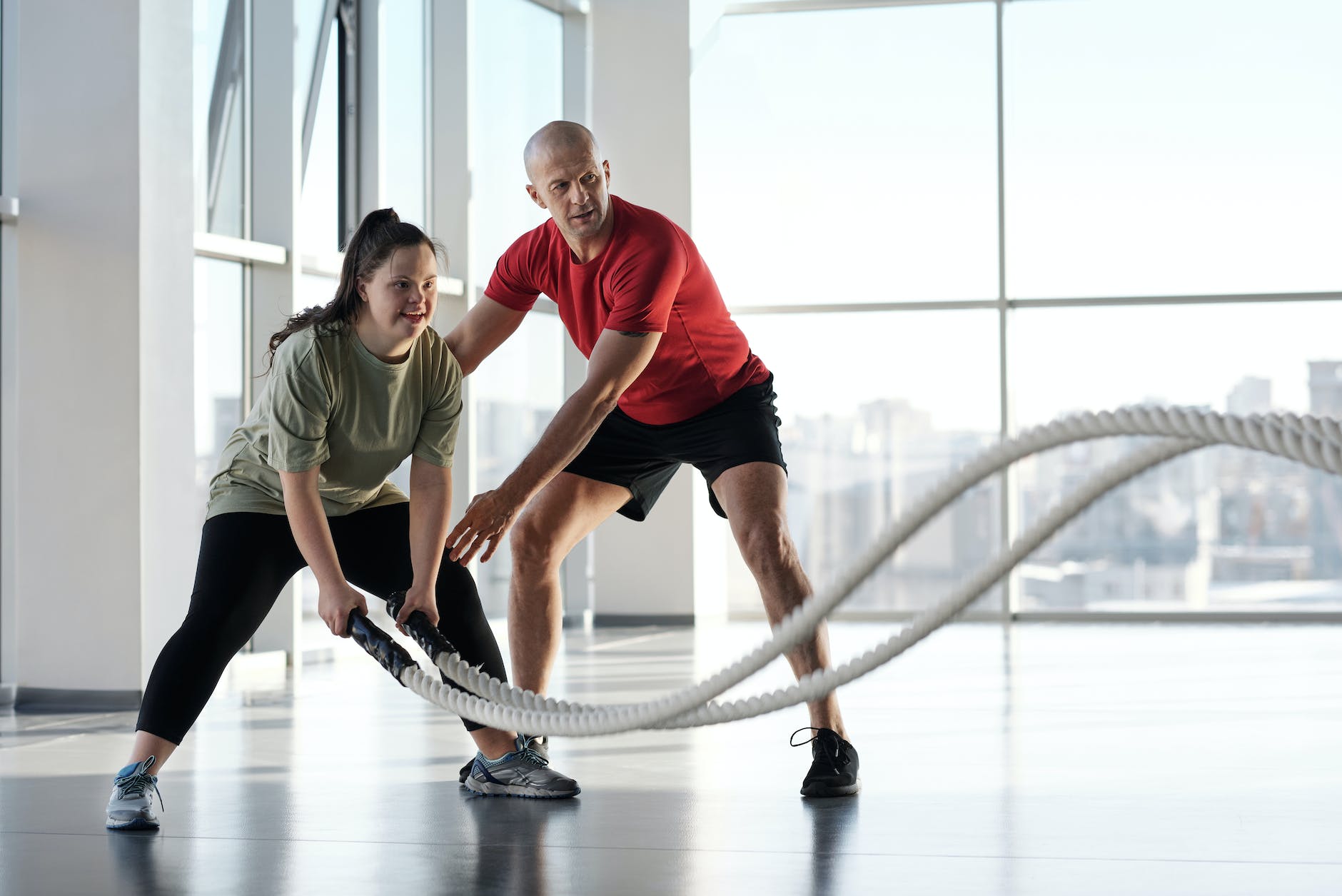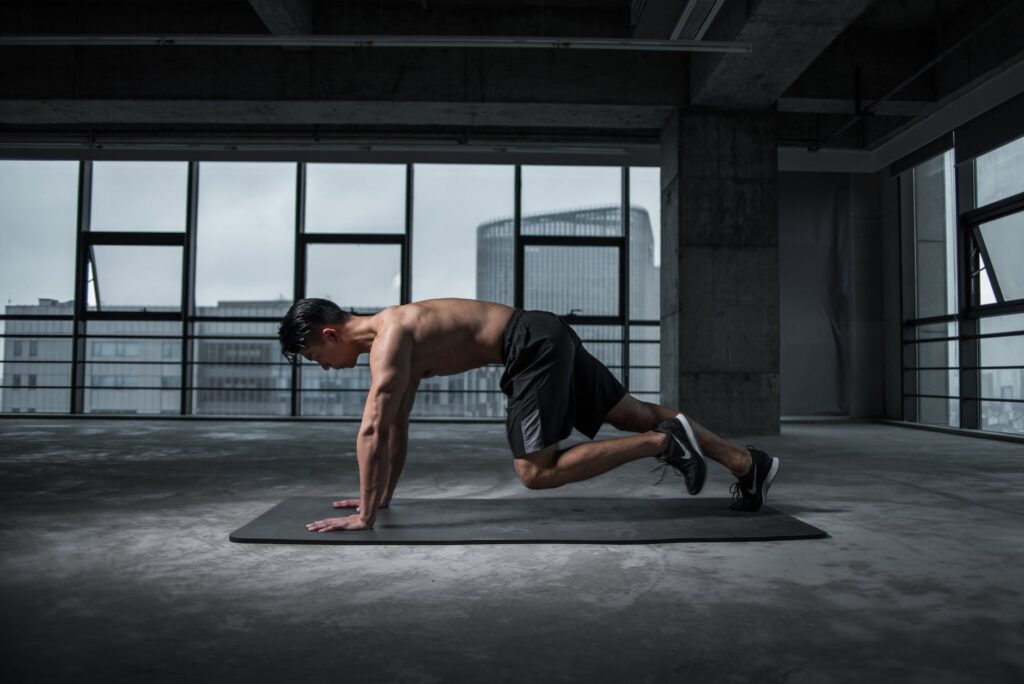Low-impact cardio, a type of workout that raises your heart rate without causing joint pain, is one alternative.
Based on runners’ breathlessness and sweat-drenched t-shirts following sprint training, it’s tempting to believe that pounding the pavement (or belt) is the ultimate form of cardio.
However, jogging isn’t always the ideal aerobic exercise. The right type of cardio is a routine that you can do every day and whatever your body responds well to. If you despise running or your knees hurt while doing it, it’s not the right form of exercise for you… but that doesn’t mean you give up.
The Advantages of Low-Impact Cardio
Cardiorespiratory (aka cardio) training involves activities that assist in stimulating and strengthening the heart and lungs.
Cardio raises your heart rate, gets your blood moving, and trains your lungs and heart to perform more efficiently to carry oxygen to your muscles, allowing you to undertake more rigorous activities without feeling winded. Along with improving your endurance and heart health, cardio can be a significant calorie-burner if that’s what you’re after.
Some popular aerobic workouts, including running, box jumps, and burpees, are also high-impact, which means they have a significant impact on your feet and joints. While this hammering may be unnoticed by some, it may be uncomfortable for others.
High-impact cardio can be really detrimental. It can also contribute to the creation of new ailments under any of those categories for anyone who has foot or arch issues, whether it’s plantar fasciitis, Achilles tendon [injuries], or something else.
Low-impact cardio exercises, on the other hand, are mild on the knees, joints, low back, and feet while challenging and strengthening your cardiorespiratory system.
Low-Impact Cardio Exercises
Jump-Free Plyometric Exercises
Plyometric training entails explosive actions that build muscle and strength, such as jump squats, speed skaters, and other hop-heavy activities.

However, these workouts do not have to be strenuous. Low-impact plyometric workouts include medicine ball slams, wall balls, box step-ups, and battle rope waves, which all help you create explosive power and strength. These are plyometric movements that we don’t necessarily think of as cardio because you’re not going to do them at a steady state for 30 minutes like you would if you were running or cycling.
However, they do raise your heart rate and have a high-intensity interval component.
Translation: Low-impact cardio workouts can still be incorporated into your HIIT routine. (Take this as a hint that you should finally purchase some combat ropes for your home gym.)
Bodyweight Modifications
Mountain climbers and burpees can both benefit your training program by strengthening your entire body and increasing your heart rate. However, they can have an undue influence on some people.
In certain circumstances strolling your feet back and forth rather than hopping. There’s no impact — you’re never jumping, and there’s never an explosive moment. You literally bend down to the ground, place your hands on the floor, step back with your left foot, step back with your right foot, step forward with each foot individually, stand up, and repeat for burpees. It’s the same motion as before but without the impact.
Mountain climbers, on the other hand, will just touch their toes at the top, step back, and repeat on the opposite side rather than driving their feet up to their chest as if they were sprinting. It eliminates the jump and any potential harm to your knees and feet, and it makes it a universal activity for all individuals.
Even though you’ll be exercising at a slower pace, these low-impact cardio movements will still raise your heart rate — and in some respects, they may feel even more difficult. When you exercise at a slow pace, muscles have to really focus on each movement. In a way, it’s almost like a better workout.
Speed Boxing
Pounding the bag after a long day is a great way to take some stress off after a busy day. Speed boxing, on the other hand, is a low-impact cardio alternative. Punching and kicking for speed has less impact than punching and kicking for power.
A lot of folks do speed rounds just by tapping the bag, and it gets your heart rate going without creating any jarring movements to your wrists or knees. You can also drop the bag totally and punch the air in front of you, which eliminates all impact.
How to Incorporate Low-Impact Cardio into Your Workouts
Not sure how to incorporate low-impact cardio routines into your daily routine? Add them into a circuit workout, with 30 seconds of cardio and 30 seconds of strength-training motions alternated.
The strength workouts will provide some recovery time before the following high-intensity cardio action. However, because you aren’t taking a full rest between moves, your heart rate will generally remain elevated, providing for a higher calorie burn.
Choose two low-impact cardio moves (such as medicine ball slams, wall balls, box step-ups, battle rope waves, modified mountain climbers and burpees, and speed punches) and two strength-training exercises (such as dumbbell squats, dumbbell chest presses, dumbbell bicep curls, push-ups, and bodyweight walking lunges) to create a circuit workout.
Alternate between cardio and strength routines in the circuit for three rounds, performing each for 30 seconds. Create and perform as many circuits as you want, according to Bernard, depending on how much time you have to sweat.

Cardio Circuit Workout with Low Impact
If designing your own routine sounds daunting and you want to eliminate all uncertainty, try this low-impact cardio workout.
It operates as follows: For 30 seconds, complete each exercise in the circuit. Rest for 30 to 90 seconds after one round, then perform the circuit two more times. Rep the procedure for the next circuit.
Required equipments are:
A set of medium dumbbells $35, amazon.com)
A medicine ball (Buy It, $32, amazon.com)
Circuit 1
Modified Mountain Climbers
A. Begin in a high plank position with your shoulders over your wrists, your fingers wideout, your feet hip-width apart, and your weight on the balls of your feet. From the shoulders to the ankles, the body should be in a straight line.
B. Brace core, elevate one foot off the floor, and bring knee to chest while maintaining a flat back and gazing between hands.
C. Return the foot to the starting position and repeat with the other leg. Bring your knees in toward your chest alternately.
Repeat for another 30 seconds.
Squat with a Dumbbell Goblet
A. Hold a dumbbell with both hands in front of you at your chest level with your feet hip-width apart, elbows pointing down.
B. Lower into a squat while keeping your chest up and your core tight, pushing your hips down and back as if you are ready to sit in a chair. The thigh muscles should be parallel to the ground. Allowing the knees to collapse toward the midline is not recommended.
C. Return to the starting position by pressing your feet firmly into the ground.
Repeat for another 30 seconds.
Slamming a medicine ball
A. Stand with your feet somewhat wider than shoulder-width apart, holding a medicine ball.
B. Lift the ball overhead explosively, then slam it to the floor by driving the ball downward. Follow the ball with your body, avoiding waist bending, and finish in a low squat position with your head high, chest, and glutes low.
C. On the initial bounce, scoop the ball up and explode upward, propelling the ball back overhead and completely extending the body and arms.
Repeat for another 30 seconds.
Push-Up
A. Begin in a high plank position, hands just beneath shoulders, legs outstretched, and feet hip-width apart.
B. Tuck the tailbone and move the navel toward the spine to engage the core. Draw the shoulders down and away from the ears to tighten the lats. Use your glutes and quads.
C. Extend the elbows to form a 45-degree angle with the body. Look down to keep your neck neutral, then slowly lower your body until you reach a stop 3 inches above the floor. Keep your head to toe in a straight line by keeping the core engaged throughout the movement.
D. Push back up quickly to begin.
Repeat for another 30 seconds.
Circuit 2
Modified Burpees
A. Stand with your feet shoulder-width apart, your weight in your heels, and your arms at your sides.
B. Push your hips back, bend your knees, and drop your body into a squat.
C. Place your hands directly in front of and just inside your feet. Transfer weight to your hands.
D. In a plank position, step your feet back. From head to heels, the body should form a straight line. Take care not to let your back slump or your buttocks protrude into the air.
E. Lower into a push-up or lower your body all the way to the floor, keeping your core engaged. Push up to get your body off the floor and back into plank posture.
Step your feet forward so that they land just outside of your hands. Reach your arms high and stand explosively. For the next rep, immediately lower back into a squat.

Walking Lunge Using Your Own Weight
A. Stand with your feet hip-width apart and your core tight.
B. Brace your core and take a big step forward with your right foot, lowering until your knees are 90 degrees.
C. Push off the rear foot and press into the front foot to stand with your weight evenly distributed across both feet. At the top, squeeze your glutes.
D. Step forward with your left foot to perform a rep on the opposite side.
Punches with Quick Feet
A. Begin in a boxer’s stance, with the left foot front, fists shielding the face, and elbows in.
B. Standing on the balls of your feet with your knees bent, quickly shift your weight from one foot to the other foot while throwing jabs (a punch forward with your left arm) and crosses (a punch forward with your right arm). Repeat.
Bicep Curl using Dumbbells
A. Stand with your feet about a foot apart and your core tight. With straight arms and a neutral grip, palms facing forwards, hold a dumbbell in each hand. To begin, tuck your ribs to stabilize your core and clench your glutes.
B. Keeping your elbows tight to your sides and your shoulders back, utilize your bicep muscles to simultaneously drag both dumbbells nearer their matching shoulders until your wrists nearly touch.
C. Pause, then return the dumbbells to their sides with control. Repeat.
To Conclude on Low Impact Cardio
To reap the health benefits, experts recommend 1 1/2 hours of moderate-intensity aerobic activity, 75 minutes of strenuous aerobic activity, or a combination of both per week.
The talk test is one method for determining the intensity of your workout: According to the Mayo Clinic, if you can hold a conversation but can’t sing, you’re working at a moderate level, but if you can only say a few words at a time, that means you’re working at a vigorous intensity.
People add aerobic activities into their workout program every time they work out, whether it’s 3, 5, or as many days a week. (FTR advocates doing certain strength-training techniques during every session to reap some significant health benefits such as greater bone strength and reduced injury risk.)
